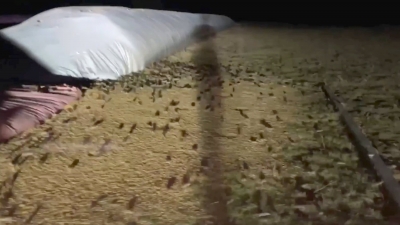
A mice infestation in your home could give your parents sleepless nights. They would swing into action, setting up traps to get rid of the rodents as quickly as possible. Mice are not only troublesome pests, but also dangerous. They eat away our supplies, damage our books and belongings and make a terrible mess of the house. And they also contaminate food and spread diseases. Now, imagine the plight of residents of rural Australia, which is witnessing the worst plague of mice in decades.
After years of drought, rural New South Wales and parts of Queensland enjoyed a bumper crop due to the recent wet season. But this influx of new produce and grains has led to an explosion in the mouse population. While houses are trapping dozens of these rodents every night, supermarkets tally crosses hundreds. Residents complain of unbearable stink whether the little mammals are alive or dead. Eyewitness videos shared online show thousands of the tiny rodents swarming around farms and streets. It is quite a nightmarish experience for farmers and businesses alike. Some unlucky farmers have lost their entire harvests to the mice. Hotels in the infested areas are closing their doors to visitors. The plague so far has estimated to have cost the businesses upwards of $30,000.
Locals say they started noticing the swarms up north in October 2020, and the wave of rodents has been spreading south ever since, growing to unimaginable proportions. Intensive baiting programmes have so far had little success against the infestation, and locals are hoping for a temperature drop or a heavy rain to drown the mice in their burrows. Efforts to poison the mice are backfiring as their carcasses started appearing in water tanks.
Not uncommon in Australia
The mouse plague has occurred several times throughout parts of Australia, usually in the grain-growing regions. Australia and China are the two countries where plagues of mice are known to occur.
What causes a mouse plague?
The breeding season in mice begins in spring and continues into autumn, given suitable weather conditions. One pair of breeding mice can produce a new litter every three weeks, potentially birthing over 500 offspring in one season. A female mouse reaches sexual maturity in 5 to 6 weeks. When the food supply is abundant the breeding season could extend well into autumn and lead to a population explosion. Most plagues end in July when cold winter conditions stress the population and when food becomes scarce.
Picture Credit : Google



